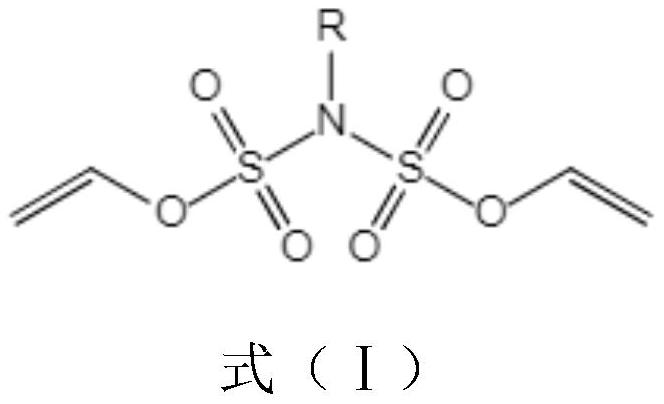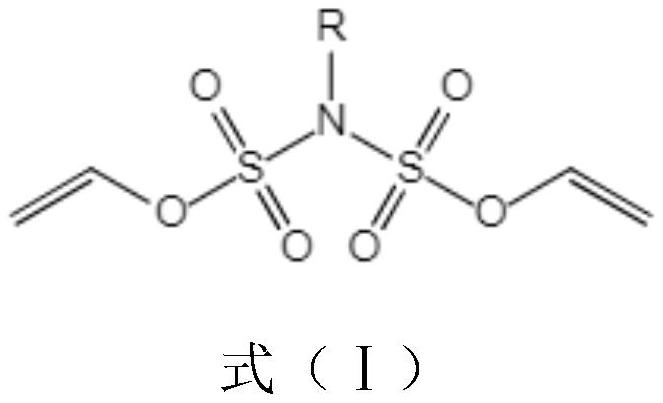Lithium ion battery electrolyte and lithium ion battery
A lithium-ion battery and electrolyte technology, applied in secondary batteries, circuits, electrical components, etc., can solve the problems of continuous decomposition and consumption of electrolyte, irreversible loss of active lithium, damage to SEI film, affecting battery cycle performance, etc., and achieve excellent stability. Electrochemical performance, effect of high energy density
- Summary
- Abstract
- Description
- Claims
- Application Information
AI Technical Summary
Problems solved by technology
Method used
Image
Examples
Embodiment 1
[0057] Preparation of Electrolyte 1 and Experimental Battery 1
[0058] (1) Preparation of Electrolyte 1
[0059] In an argon glove box with moisture content ≤ 10ppm, mix ethylene carbonate (EC) with ethyl methyl carbonate (EMC), diethyl carbonate (DEC), and fluoroethylene carbonate (FEC) according to the mass ratio EC:EMC : DEC: FEC = 3: 4: 2: 1 to mix evenly, then slowly add lithium salt, namely lithium hexafluorophosphate, after the lithium salt is completely dissolved, add divinylsulfonic acid compound 1 with a mass fraction of 1% (shown in formula 1 ) and vinylene carbonate with a mass fraction of 1%, and after stirring evenly, an electrolyte 1 is obtained, wherein the mass concentration of lithium hexafluorophosphate in the entire electrolyte is 14%.
[0060]
[0061] (2) Preparation of positive electrode sheet
[0062] Mix positive electrode active material NCM, conductive agent acetylene black, and binder polytetrafluoroethylene according to the mass ratio NCM: ac...
Embodiment 2
[0068] Electrolyte 2 and experimental battery 2 were prepared.
[0069] Compared with Example 1, the only difference is that in the electrolyte preparation process, after the lithium salt is completely dissolved, 3% of the divinylsulfonic acid compound 1 (shown in formula 1) and 1% of the mass fraction are added. of vinylene carbonate.
Embodiment 3
[0071] Electrolyte 3 and experimental battery 3 were prepared.
[0072] Compared with Example 1, the only difference is that in the electrolyte preparation process, after the lithium salt is completely dissolved, 5% of the divinylsulfonic acid compound 1 (shown in formula 1) and 1% of the mass fraction are added. of vinylene carbonate.
PUM
 Login to View More
Login to View More Abstract
Description
Claims
Application Information
 Login to View More
Login to View More - R&D
- Intellectual Property
- Life Sciences
- Materials
- Tech Scout
- Unparalleled Data Quality
- Higher Quality Content
- 60% Fewer Hallucinations
Browse by: Latest US Patents, China's latest patents, Technical Efficacy Thesaurus, Application Domain, Technology Topic, Popular Technical Reports.
© 2025 PatSnap. All rights reserved.Legal|Privacy policy|Modern Slavery Act Transparency Statement|Sitemap|About US| Contact US: help@patsnap.com



